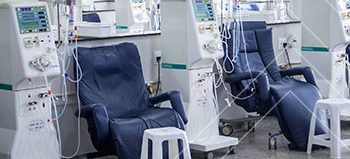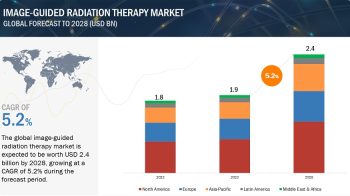Overview:
This study involved the extensive use of both primary and secondary sources. The research process involved the study of various factors affecting the industry to identify the segmentation types, industry trends, key players, competitive landscape, key market dynamics, and key player strategies.
Projected Revenue Surge:
The global injection pens market is projected to reach USD 53.3 billion by 2026 from USD 37.6 billion in 2021, at a CAGR of 7.2% during the forecast period.
Major Growth Influencing Factors:
Growing prevalence of chronic diseases, increasing number of regulatory approvals, favourable reimbursement and government support, and technological advancements in injection pens tend to drive the market. Though the market is growing, but factors like alternative drug delivery modes, poor reimbursement scenarios in developing regions, and needle anxiety tend to restrain the market growth.
Whereas, needle-stick injuries & misuse of injection pens tend to pose a challenge for the market. But, the opportunities for the market lie in the patent expiry of biologics and emerging markets.
Download PDF Brochure@
https://www.marketsandmarkets.com/pdfdownloadNew.asp?id=42342539
Restraint: Preference for alternative drug delivery modes
There are many alternatives to injection pen devices. The main restraining factors for injection pens are needle stick anxiety and injury. Hence, there are various needle-free devices that come with an added advantage—they do not induce needle anxiety, which is a significant deterrent to the greater adoption of injectable drug treatments. Non-complacence among children as well as adults is mostly attributed to the pain associated with daily injections and the requirements of long-term therapy.
Additionally, insulin pen therapy is seen to cause hyperglycemia in some patients, as the dose cannot be regulated. Hence, in Europe, there has been a shift in diabetes treatment, from insulin pens to insulin pumps, due to their ability to perform automated insulin suspension and decrease the risk of hypoglycemia. In developing countries such as India, China, and Brazil, oral insulin delivery is preferred as it is easy to use, convenient, cost-effective, safe, and acceptable.
End Users:
In the end user segment, home-care settings is expected to grow at the highest rate in the injection pen market
Based on end users, the injection pens market is segmented into home care settings and hospitals & clinics. In 2020, the home care settings segment accounted for the highest growth of the injection pens market. The growing geriatric population, ease of drug administration, increasing prevalence of chronic diseases, technological advancements, and favorable reimbursement scenarios are some of the key factors driving the growth of the home care settings market.
Geographical Growth Scenario:
North America is expected to account for the largest share for players operating in the injection pen market
In 2020, North America dominated the global injection pens market with the largest share. The highest share of the North American injection pens market can primarily be attributed to the rising prevalence of diabetes, favorable reimbursement scenario, and the increasing number of awareness programs. The high awareness amongst the patients, increase in the disposable income of the patients and increased adoption of injection pens also contributes to the higher share of the North America in the injection pen market.
Opportunity: Patent expiry of biologics to drive the demand for biosimilars
Biosimilars were introduced in 2006 by many pharmaceutical companies such as Sandoz (Germany), Teva Pharmaceutical Industries Ltd. (Israel), and JCR Pharmaceuticals Co., Ltd. (Japan). Due to their lower costs (as compared to their patented counterparts), the demand for biosimilars has increased significantly. The impending patent expiry of many biologic molecules will also serve to drive the demand for biosimilars. Insurance companies and governments are favoring the use of biosimilars and generics.
For instance, CVS Caremark, one of the major prescription insurers in the US, has replaced branded injectable drugs such as Lantus by Sanofi and EpiPen by Mylan with their biosimilars Basaglar (available in injection pen) by Eli Lilly and Adrenaclick (an autoinjector) by Amedra Pharmaceuticals. Since many injectables for the treatment of chronic diseases are biologics, the expiry of patents and growing support from governments and insurance providers provide an opportunity for the growth of the injection pens market.
Request Sample Pages@
https://www.marketsandmarkets.com/requestsampleNew.asp?id=42342539
Global Leaders:
The prominent players in the injection pens market are Novo Nordisk A/S (Denmark), Becton, Dickinson and Company (US), Ypsomed Holding AG (Switzerland), Sanofi (France), Eli Lilly and Company (US), Merck KGaA (Germany), AstraZeneca plc (UK), F. Hoffmann-La Roche Ltd. (Switzerland), Owen Mumford (UK), Sulzer Ltd. (Switzerland), Sun Pharmaceutical Industries Ltd. (India), Pfizer (US), Biocon Ltd. (India), Lupin Ltd. (India), Wockhardt Ltd. (India), AptarGroup, Inc. (US), Novartis AG (Switzerland), Gerresheimer AG (Germany), Bespak Europe Ltd. (UK), SHL Medical AG (Switzerland), Boehringer Ingelhem (Germany), Nemera France SA, Companion Medical (US), and Jiangsu Delfu Medical Devices Co., Ltd. (China).


